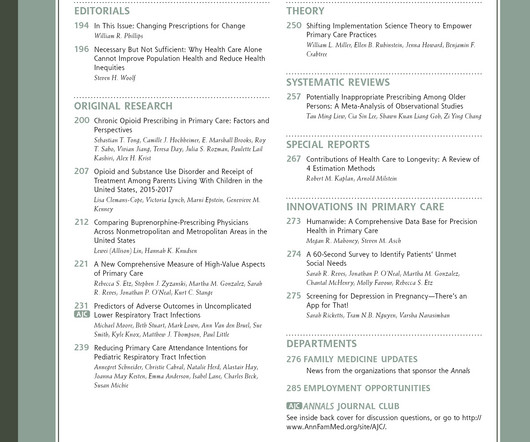Disaster preparedness, What we have learned from COVID 19 pandemic [COVID-19]
Annals of Family Medicine
NOVEMBER 20, 2024
Context: Despite a joint recommendation in 2003 by the AAMC and CDC that bioterrorism and mass-casualty training be included in the medical school curriculum, few medical schools have incorporated formal disaster training. Mental health services remained adequate for 65% (n=22), compared to 68% (n=23) before pandemic.











Let's personalize your content